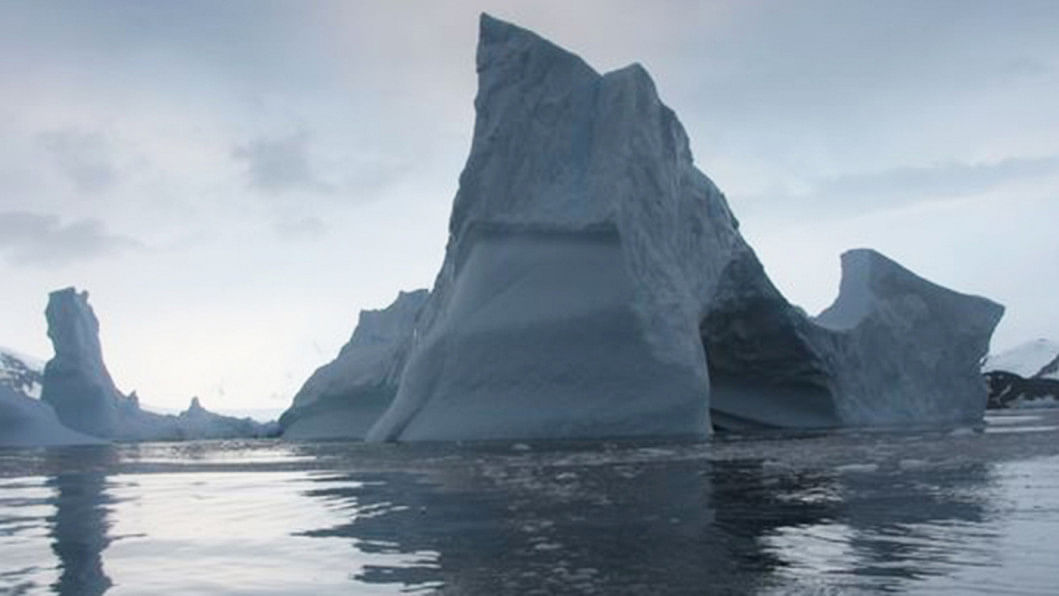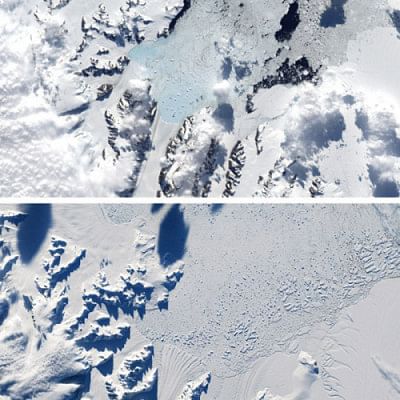Antarctic ice shelf could collapse by 2020: Nasa

It has been a really bad week for the ice shelves of the quickly warming Antarctic peninsula, the part of the vast frozen continent that extends northward toward South America.
Earlier this week, we learned that the gigantic marine-based Larsen C ice shelf, which is almost as big as Scotland, has several worrisome vulnerabilities — including a growing rift across it. Scientists from the British Antarctic Survey and several other research centers say this could pose an "imminent risk" to its stability.
And now, Nasa scientists are giving an even worse verdict for the remnants of the nearby Larsen B ice shelf, much of which already disintegrated back in 2002 reports The Washington Post. Back then, the shelf lost a region larger than Rhode Island, but there are still 618 square miles left of it — for now.
However, in a new study in Earth and Planetary Science Letters, researchers with Nasa's Jet Propulsion Laboratory and the University of California at Irvine say that this remnant now faces its "approaching demise." In a news release, Nasa adds that the ice shelf "it is likely to disintegrate completely before the end of the decade."
If these two research teams are right, then the coming years could see major ice calving events off of the Antarctic peninsula — especially for Larsen B.
"What might happen is that for a few years, we will have the detachment of big icebergs from this remaining ice shelf, and then at one point, one very very warm summer, when you have lots of melting of the surface, the whole thing will just give way, and will shatter into thousands of smaller icebergs," says the Jet Propulsion Laboratory's Ala Khazendar, lead author of the new study.
The weaknesses of Larsen B — which the researchers detected using measurements from planes and satellites — include what the study calls its "persistent ice flow acceleration since the year 2002," as well as a major crack that is growing across the remainder of the ice shelf.

Behind the sea-based ice shelf, meanwhile, are land-based glaciers that have also started to slide faster toward the sea. Both the Leppard and Flask glaciers have increased their rates of flow, the study reports, and their elevation has accordingly dropped by 49 to 65 feet over the period from 2002 to 2011.
"The final phase of the demise of LBIS [Larsen B ice shelf] is most likely in progress," the researchers conclude. "The weakening of the remnant ice shelf is manifested by its acceleration, front retreat, enhanced fracture including the rapid widening of a large rift close to the grounding line [where the ice shelf is moored on the seafloor] and possibly the detachment of the stagnant part of the ice shelf from neighboring grounded ice."
The loss of oceanic ice shelves does not directly increase sea level, because these shelves are already immersed in the water. But their collapse speeds the seaward flow of glaciers held behind them. And when ice leaves land and enters water, that's when seas rise.
The good news here is that while other parts of Antarctica contain ice volumes sufficient to raise global sea levels by many feet, the Antarctic peninsula itself holds much less potential for sea-level rise.
To give some sense of scale, the US Geological Survey estimates that the glaciers of the Antarctic peninsula region could conceivably contribute up to 1.5 feet of global sea-level rise. (That's from all of the region's glaciers, not just those currently held back by Larsen B — which would be only a fraction of the total — or by the much bigger Larsen C.) The number is comparable to the potential contribution of all of the world's other glaciers and ice caps, combined. But it's still nothing in comparison to the potential contributions from the great ice sheets of Greenland, West Antarctica and East Antarctica, which contain many feet worth of globally distributed water.
Nonetheless, the rate of global sea-level rise — recently pegged at 2.6 to 2.9 millimeters annually — could increase because of what's now unfolding on the Antarctic peninsula at both the Larsen B and C ice shelves.
According to the Jet Propulsion Laboratory's Khazendar, of current sea level rise, roughly a third comes from Antarctica and Greenland, a third from the expansion of seawater as it warms, and a third from glaciers and ice caps around the world. When large parts of the Larsen B ice shelf collapsed in 2002, the glaciers behind these parts accelerated their seaward progress, and that could happen again with the remainder of Larsen B, and the glaciers feeding it.
"Nobody ever says that all of the ice in Antarctica, or the Antarctic peninsula, will be in the ocean, but even 10, 20 centimeters would be a problem for the planet," he says.

 For all latest news, follow The Daily Star's Google News channel.
For all latest news, follow The Daily Star's Google News channel. 



Comments